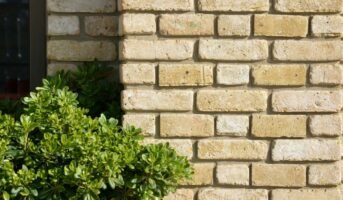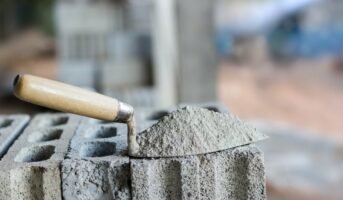An electric shock may occur if you touch a live metal component in your electrical system. If you want to avoid it, earthing is a good way to do so. Earthing is accomplished by allowing a fault current to flow safely to the ground through a protective conductor. It also triggers the protection mechanism (the fuse or circuit breaker) to cut power to the faulty circuit.
Electrical earthing refers to discharging excess electrical current directly into the earth through a low-resistance cable. Connecting the equipment’s neutral (or the supply system’s neutral) to the earth constitutes electrical earthing. If you want the answer to “what is earthing?”, then read the article.
Earthing: Purpose
Earthing is done so that the potential of a current-carrying conductor does not increase with respect to the earth beyond its intended insulation, preventing electrocution and fires caused by the earth leaking electricity via an undesirable channel.
The metal components of electrical appliances get charged, and static charge builds on them when they come into touch with a live wire, which may happen when the wiring in question is improperly installed, or the cable insulation is damaged. A person receives a shock by touching a charged metal.
Earthing: Different earthing methods for electrical systems
- GI (galvanised iron) wire directly connects the system’s neutral and the ground, or earth. This kind of earthing is known as neutral earthing or system earthing. Only systems with star winding get this kind of earthing. Electrical appliances have access to earthing equipment. Electrical equipment components that do not generate current, such as the metal frame, are grounded through the conducting wire.
- Pipe earthing is the most effective and cost-effective method of earthing. To create earth electrodes, pipes with a diameter of 38mm and a length of 2 metres are buried vertically in the ground.
- Plate earthing involves burying a copper or GI earthing plate at a depth of more than three metres below grade. An alternate layer of coke and salts protects this earthing plate.
- In transmission procedures, strip earthing is employed. Electrodes are laid in horizontal trenches at least 0.5 metres deep, with a cross-section of 25mm x 1.6mm for copper or 25mm x 4mm for GI or steel.
Earthing: Beneficial effects of grounding
- In the event of a short circuit, earthing will prevent any harm to the workers.
- Even if the insulation fails, earthing still offers the simplest route for short-circuit current to pass.
- Earthing prevents damage to equipment and people from lightning and high voltage surges.
- With correct earthing, metal may be utilised in electrical systems without first checking its conductivity.
Earthing: Constituents of the earthing infrastructure
The following are the primary parts of an all-inclusive electrical earthing system:
- Earth Continuity Conductor
- Earthing Lead
- Earth Electrode
The term “earth wire” or “earth continuity conductor” refers to the part of the earthing system that connects all of the metals in an electrical installation, such as the conduit, ducts, boxes, metallic shells of the switches, distribution boards, switches, fuses, regulating and controlling devices, metals in electrical machines like motors, generators, and transformers, and the metal framework in which electrical devices and components are installed.
Earthing: How it occurs?
To achieve earthing, the installation’s components are wired to a set of electrodes or electrical wires located in or near the soil. All of the equipment’s non-current-carrying metallic elements are linked to the earthing mat or electrode through a flat iron riser buried in the ground. The term “earthing” describes the assembly that makes contact. Electrical connections are the metal wires that go between various components of an installation and the grounding system. The term “earthing system” refers to both the practice and the associated link.
An earthing joint, also known as an “earthing lead,” is the connection between the earth’s continuous conductor and the earth’s electrode or earth plate. The earthing lead is often a hard-drawn, bare copper wire. The earth electrode (earth plat) is linked to the connecting point via an earthing lead after all earth conductors have been connected to common (or many) connecting points.
Two copper wires serve as earthing leads, connecting the device’s metallic body to a ground electrode or earth plate, increasing the installation’s safety factor. In other words, there will be four earthing leads if two earth electrodes or earth plates are used. To provide optimal safety, both earth’s leads must function effectively to transport fault currents, and it should not be assumed that these leads are utilised as parallel pathways.
The last piece of an electrical earthing system is a metallic electrode or plate that is buried in the ground. The term “earth plate” or “earth electrode” is used to describe the metallic (plate) component of the earthing system that is buried underground and linked to earthing lead.
FAQs
Which four forms of earthing are there?
In India, the most common earthing methods are plate earthing, pipe earthing, mat earthing, and rod earthing.
Can you explain the fundamental concept of earthing?
By connecting a low-resistance cable straight to the ground, or earth, a device may instantly discharge whatever electrical energy it may have accumulated.
Housing News Desk is the news desk of leading online real estate portal, Housing.com. Housing News Desk focuses on a variety of topics such as real estate laws, taxes, current news, property trends, home loans, rentals, décor, green homes, home improvement, etc. The main objective of the news desk, is to cover the real estate sector from the perspective of providing information that is useful to the end-user.
Facebook: https://www.facebook.com/housing.com/
Twitter: https://twitter.com/Housing
Email: editor@housing.com












